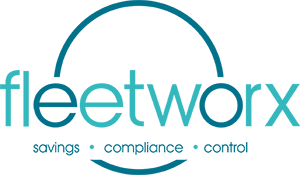19 Nov The Hidden Factors Behind Fleet Resilience – and How to Improve Yours
Fleet leaders talk a lot about efficiency, sustainability, and cost control.
But underneath all of that lies a more fundamental question: how resilient is your fleet?
Resilience isn’t about surviving disruption – it’s about staying in control, even when the landscape changes. And right now, that control is being tested like never before.
When control shifts quietly
For many organisations, the erosion of fleet resilience doesn’t happen overnight. It builds slowly, hidden behind routine processes and long-standing supplier relationships.
- Suppliers start to own the data.
- Reports begin to flow only one way.
- Benchmarks and KPIs are set externally, not internally.
Individually, none of these shifts seem dramatic. But together, they create a situation where suppliers hold the power – and procurement, finance, or HR teams are left managing around it.
That’s when resilience starts to weaken. Without true visibility or independence, fleet strategies become reactive. Decisions are made on supplier terms, not business objectives.
What real resilience looks like
A resilient fleet doesn’t rely on hope, assumptions, or supplier updates to stay in control. It’s built on independence and insight.
A resilient fleet typically has:
- Independent visibility: Consolidated, verified data that isn’t dependent on supplier reporting.
- Commercial confidence: Regularly benchmarked contracts, validated pricing, and transparent cost structures.
- Clear governance: Defined ownership for policy, performance, and supplier accountability.
- Future readiness: Proactive planning for EV transition, sustainability, and changing business needs.
When these elements are in place, resilience becomes measurable – and manageable. Fleets can adapt quickly, challenge assumptions and make decisions based on fact, not friction
Why resilience is now the critical metric
The fleet environment has never been more complex. EV mandates, supply chain volatility, sustainability pressures, and rising costs are all forcing businesses to rethink their approach.
Yet the fleets that thrive aren’t necessarily the ones with the biggest budgets or the newest technology. They’re the ones that know where they stand.
Understanding your resilience means understanding your exposure – and your potential.
When you understand your fleet’s resilience – its strengths, gaps, and vulnerabilities – you can focus effort where it matters most. You stop firefighting and start leading.
That’s why Fleetworx developed the Fleet Resilience Score and personal report – to give stakeholders a quick, objective way to see how resilient their fleet really is.

Turning insight into action
The Fleet Resilience Score takes just a few minutes to complete, but the insight it delivers can be transformative.
It helps you:
- Understand how much control you truly have over suppliers and spend
- Identify where transparency or governance may be slipping
- See how your strategy measures up across five key dimensions of resilience
- Prioritise where to take action first
Most importantly, it gives you a starting point – a clear roadmap to strengthen control, cost efficiency, and confidence in your fleet.
Final thought
Resilience isn’t a fixed state; it’s a capability that can be built, measured, and improved.
But you can’t strengthen what you can’t see.
Understanding your fleet’s resilience is the first step towards improving it – and ensuring your strategy stays ahead of supplier influence, cost volatility, and industry change.
Discover your Fleet Resilience Score today.
Back to Blogs Back to Case Studies List

Sorry, the comment form is closed at this time.